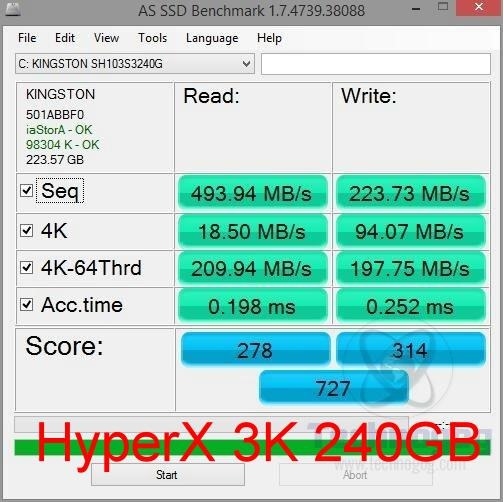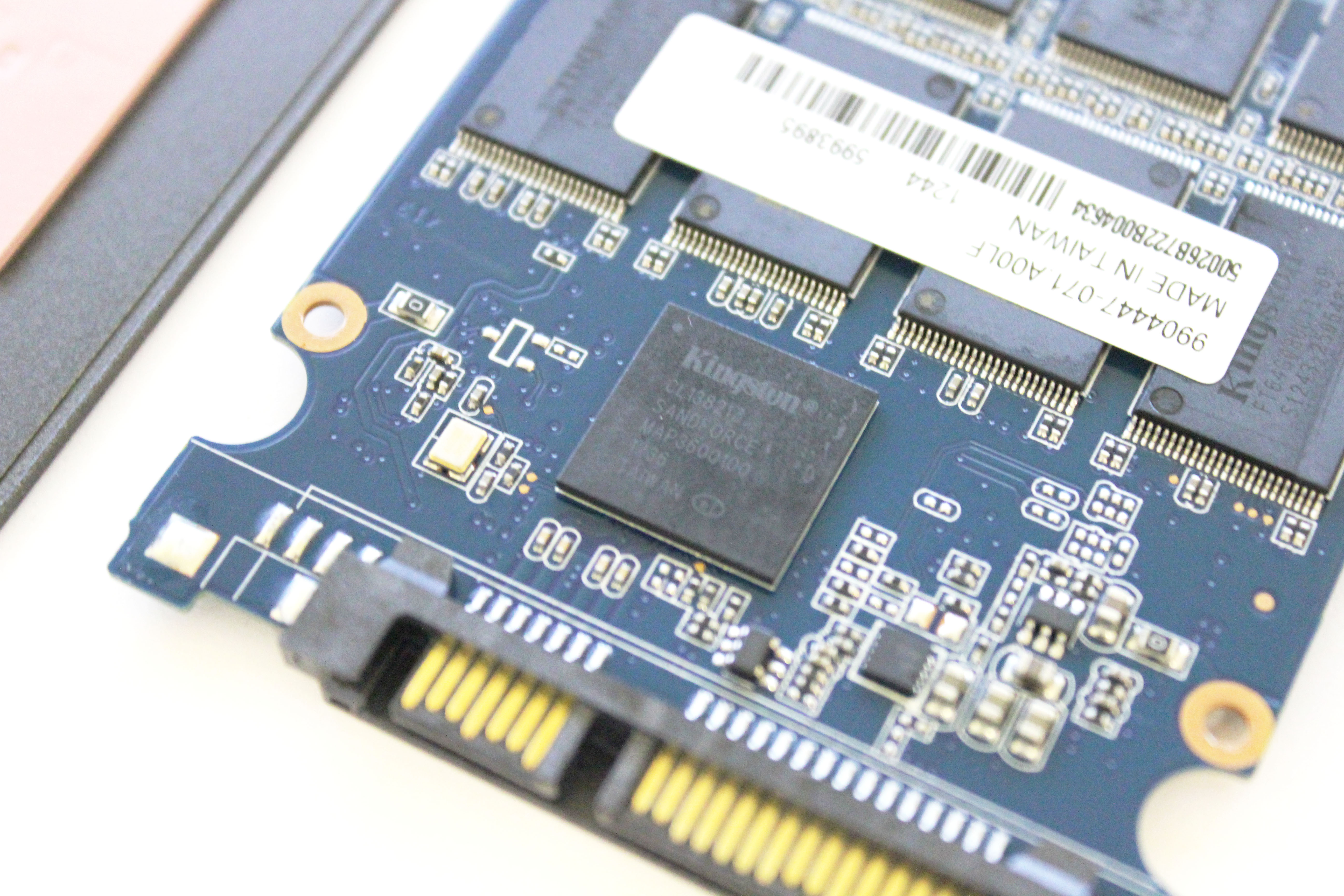


The V300 launched - and still ships with - MLC NAND, or multi-level cell NAND Flash, as opposed to the 840's TLC NAND. Kingston's V300 first launched back in November 2012, where I made comparisons to the then-new Samsung 840 drive. "It's part of our multi-BOM strategy to deliver the best price for our customers in an entry-level SSD," they said. In discussion with the company prior to this article's publication, Kingston wanted to make very clear that they are not "abandoning synchronous NAND" and that the move was to ensure the V300 is available at (what I interpreted as) a lower price than the $95 HyperX SSD, creating a more consistent pricing structure for SSDs. They feel that they've done no wrong by switching NAND suppliers, but we'll talk more about that at the bottom. Kingston very clearly stated that even with the NAND supply switch, because they spec all of their devices very conservatively, the V300 still performs within its original IOPS ratings found online. In talking with Kingston, a specifications tweak might be in the pipe for relevant channels and partners (read: retailers, system builders) to make the NAND switch more clear. Kingston V300 Specs - The Original Listingįor now, here's what the V300's specs look like, via Newegg & Kingston: I purchased my own V300(A) to go along with our first-wave review sample of the V300, a measure I took to ensure that the device I'm testing is what you'd be receiving from a retailer. Incompressible benchmarks are important, but because most user data is compressible, we have to make sure everything is tested under identical conditions. The test case was reviewed and commented on by engineers at Samsung, Kingston, LSI, and other major SSD and controller vendors.Ī lot of the user-run benchmarks for the V300 that I've seen on forums have used AS-SSD, which slams the drive with incompressible data - a worst-case scenario for Gen 2 SandForce controllers - and produces a somewhat incomplete picture. I was unsatisfied with the benchmarks performed on forums, and so built our own real-world suite to accompany a synthetic test suite. Before that, though, a definition of this article: The objective was to benchmark performance between the V300's asynchronous and synchronous NAND models, hopefully determining if there is any real-world difference. synchronous NAND briefly in just a moment. If you're unsure of what any of this even means, I'll define asynchronous vs. 2012) used synchronous NAND (V300S), the currently-shipping V300 drives use asynchronous NAND (V300A). The 19nm Toshiba Toggle-Mode 2.0 NAND in the original V300 either became more scarce or was too expensive, and so the company switched to Micron's 20nm asynchronous NAND for cost reasons.įor all future references of the V300, to reduce confusion, I will be calling them "V300A" and "V300S," or V300 Asynchronous and V300 Synchronous (NAND). Unsurprisingly, Kingston supported the product readily switching the NAND supply was in favor of price, and is the reason we've seen the V300 as low as $60-$70 on some retailers, they said. Upon publication of Kristian's post on Anandtech, I called our Kingston contact to press on a few points and also give a chance to defend their position. A recent article published down the road by Anandtech went at the V300 fiercely, referencing user AS-SSD benchmark data from forums to highlight the theoretical performance hit.
#Kingston ssdnow v300 diskmark Pc
In fact, on one of our PC builds that recommended the drive, a reader encouraged us to run updated performance benchmarks to validate the impact of the NAND switch. We've seen a lot of discussion spurred about Kingston 's silent decision to switch their mainstream consumer-targeted SSDNow V300 drive from synchronous to asynchronous NAND.


 0 kommentar(er)
0 kommentar(er)
